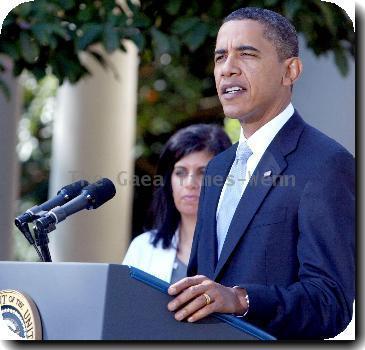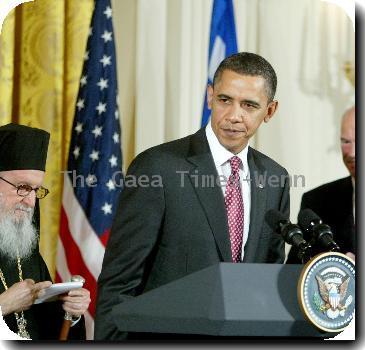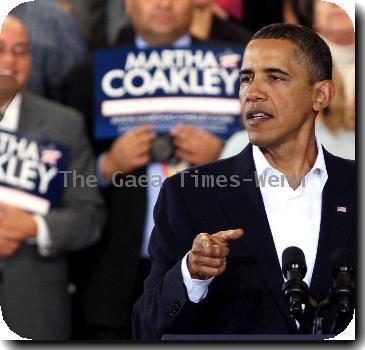Jobs grow by most in 4 years; jobless rate rises 9.9 pct. as people resume searches
By Jeannine Aversa, APFriday, May 7, 2010
Jobs up 290,000; jobless rate rises to 9.9 pct.
WASHINGTON — The economy got what it was looking for in April: A burst of hiring that added a net 290,000 jobs, the biggest monthly total in four years.
The improving picture drew so many more people into the labor force in search of employment that the jobless rate rose to 9.9 percent.
The hiring last month of 66,000 temporary government workers to conduct the census added to overall job creation. But private employers — the backbone of the economy — contributed the most: A surprisingly strong 231,000 jobs, the most since March 2006, the Labor Department said Friday.
The new jobs, generated by all major economic sectors, are the first sign that the recovery is generating significant numbers of new jobs. If it can maintained, April’s level of hiring would eventually push down the unemployment rate.
“Clearly companies have a newfound confidence in the future of the economic recovery and on the part of their own business prospects,” said Joel Naroff, president of Naroff Economic Advisors. “The broadbased job gains are an indication that businesses are feeling more comfortable about expanding their work forces,” he said.
President Barack Obama called the addition of 290,000 jobs in April “very encouraging news.” But he said much remains to be done to get Americans back to work.
The unemployment rate rose from 9.7 percent in March to 9.9 percent in April, mainly because 805,000 jobseekers — perhaps feeling better about their prospects — resumed their searches for work.
Many economists have predicted the unemployment rate would rise as people come back into the labor force. The jobless rate hit 10.1 percent in October, a 26-year high. The rate could climb back up to the 10 percent range in the months ahead, Naroff said.
Friday’s employment report sketched out a picture of a healing jobs market and an economy picking up momentum in the early spring.
Wall Street appeared to look past the more positive U.S. jobs report and instead focused on Europe’s spreading debt crisis. The trouble overseas sent the Dow Jones industrial average plunging nearly 1,000 points Thursday before recovering most of its losses. Stock prices on Friday were fluctuating sharply, as they often do the day after a big slide. By late morning, the Dow Jones industrial average was down more than 100 points.
The surprisingly high number of jobs added in April offered the latest evidence that businesses are feeling more confident in the recovery. Consumers increased their spending in March by the largest amount in five months. Factory production grew in April at the fastest pace in nearly six years and demand grew briskly for a variety of services in that same month.
Job gains in April were widespread. Manufacturers, construction companies, retailers, professional and business services, education and health services, leisure and hospitality, and government all showed gains. Among the weak spots: transportation and warehousing, and information companies, which all cut jobs last month.
Also encouraging: The employment picture in both February and March turned out to be stronger than previously thought. Payrolls grew by 230,000 in March, better than the 162,000 first reported. And, 39,000 jobs were actually added in February, an improvement from the previous estimate of 14,000 losses.
All told, 15.3 million people were out of work in April.
Counting people who have given up looking for work and part-timers who would prefer to be working full time, the so-called underemployment rate rose to 17.1 in April. That’s close to the record high of 17.4 percent in October and shows just how difficult it is for jobseekers to find work.
Another grim statistic: The number of people out of work six months or longer reached 6.7 million in April, a new high. These people made up 45.9 percent of all unemployed people, also a record high.
Hiring isn’t expected to be robust enough anytime soon to lower the unemployment rate much. Economists think it will remain above 9 percent by the November midterm elections. That could make Democratic and Republican incumbents in Congress vulnerable.
Just 21 percent of Americans consider the economy in good condition, according to an Associated Press-GfK Poll conducted April 7-12.
Nationwide, average hourly earnings edged up to $22.47 in April, from $22.46. Lackluster wage gains are a big reason consumers are still hesitant to spend lavishly, making for a more subdued economic recovery.
For employers to boost hiring significantly, the economy would need to grow at an annual rate of 6 percent to 8 percent a quarter, rather than the 3.2 percent pace logged in the first three months of this year, economists say. Such growth would mean shoppers were spending much more freely. That would give companies confidence that sales gains would last.
That scenario isn’t likely.
High unemployment and sluggish wage gains are likely to prevent consumers from going on spending sprees any time soon. Small businesses, which usually help drive job creation during recoveries, are having trouble getting loans. That tight credit is crimping their ability to expand operations and hire.
Europe’s debt crisis will probably dampen demand for U.S. exports. And the debt crisis may continue to weigh on markets. Thursday’s stock market plunge — the Dow Jones industrial average dropped nearly 1,000 points before recovering two-thirds of its losses — introduced fresh uncertainties.
Many economists think it will take until at least the middle of the decade to lower the unemployment rate to a more normal 5.5 percent to 6 percent.
Tags: Barack Obama, Labor Economy, North America, Unemployment rate, United States, Us-economy, Washington



